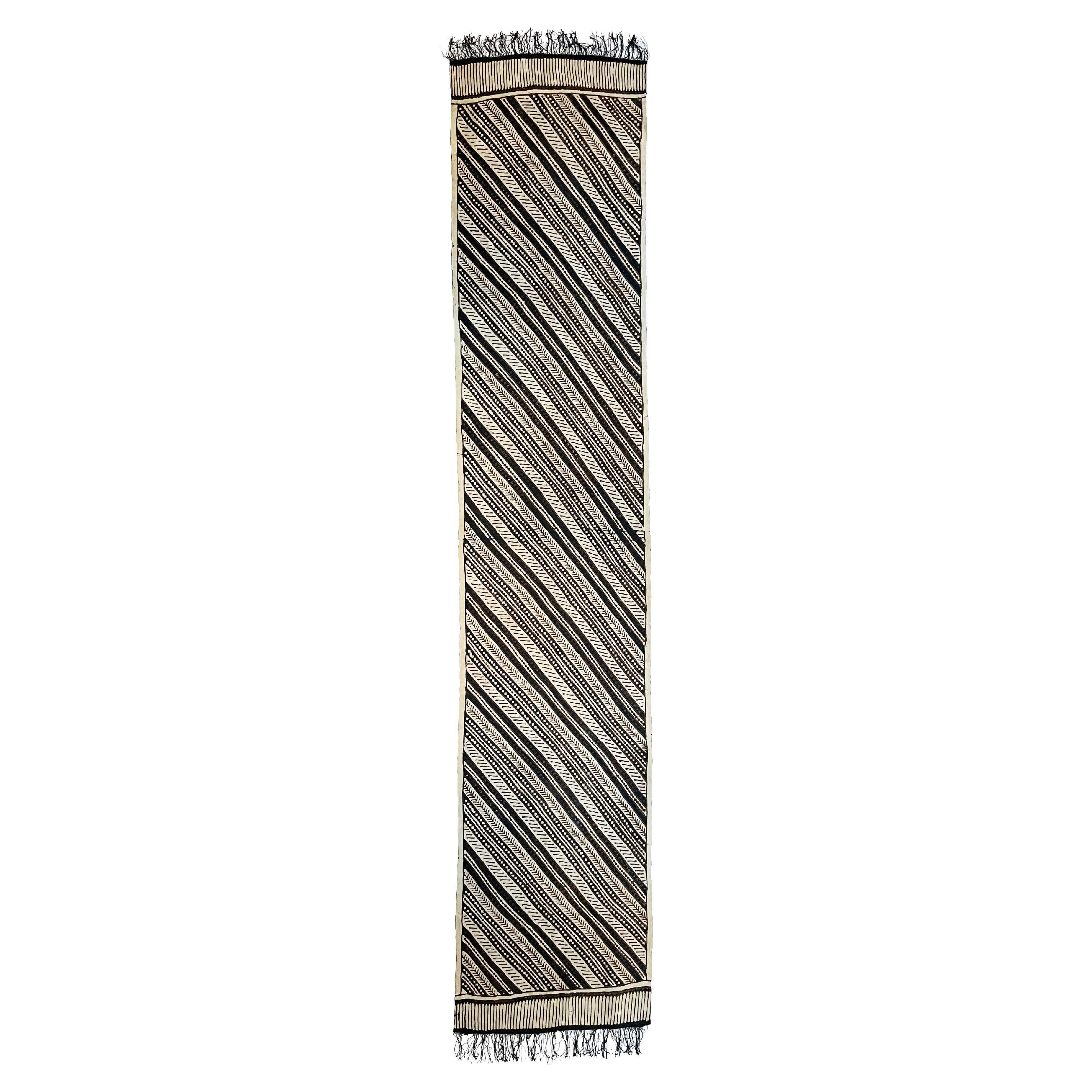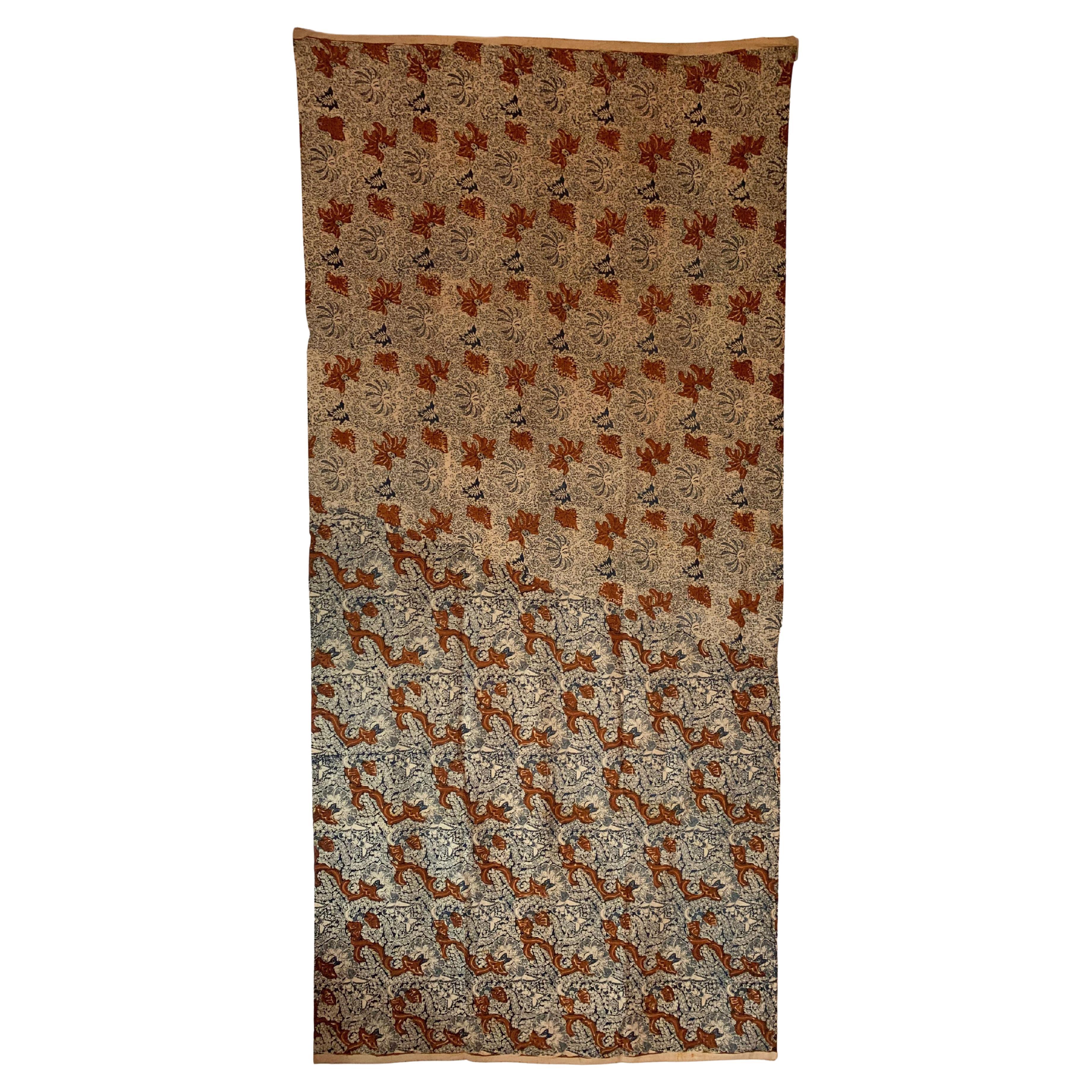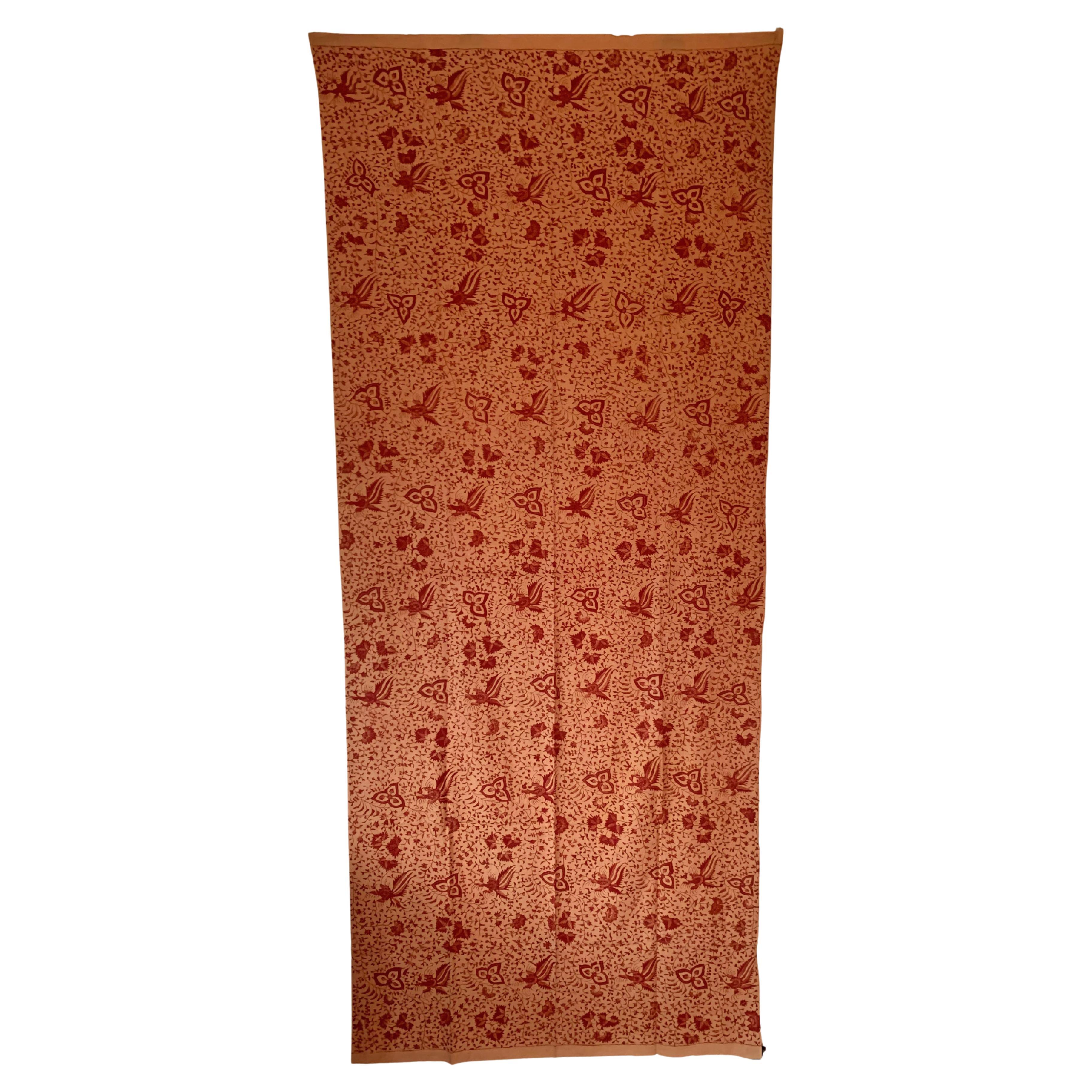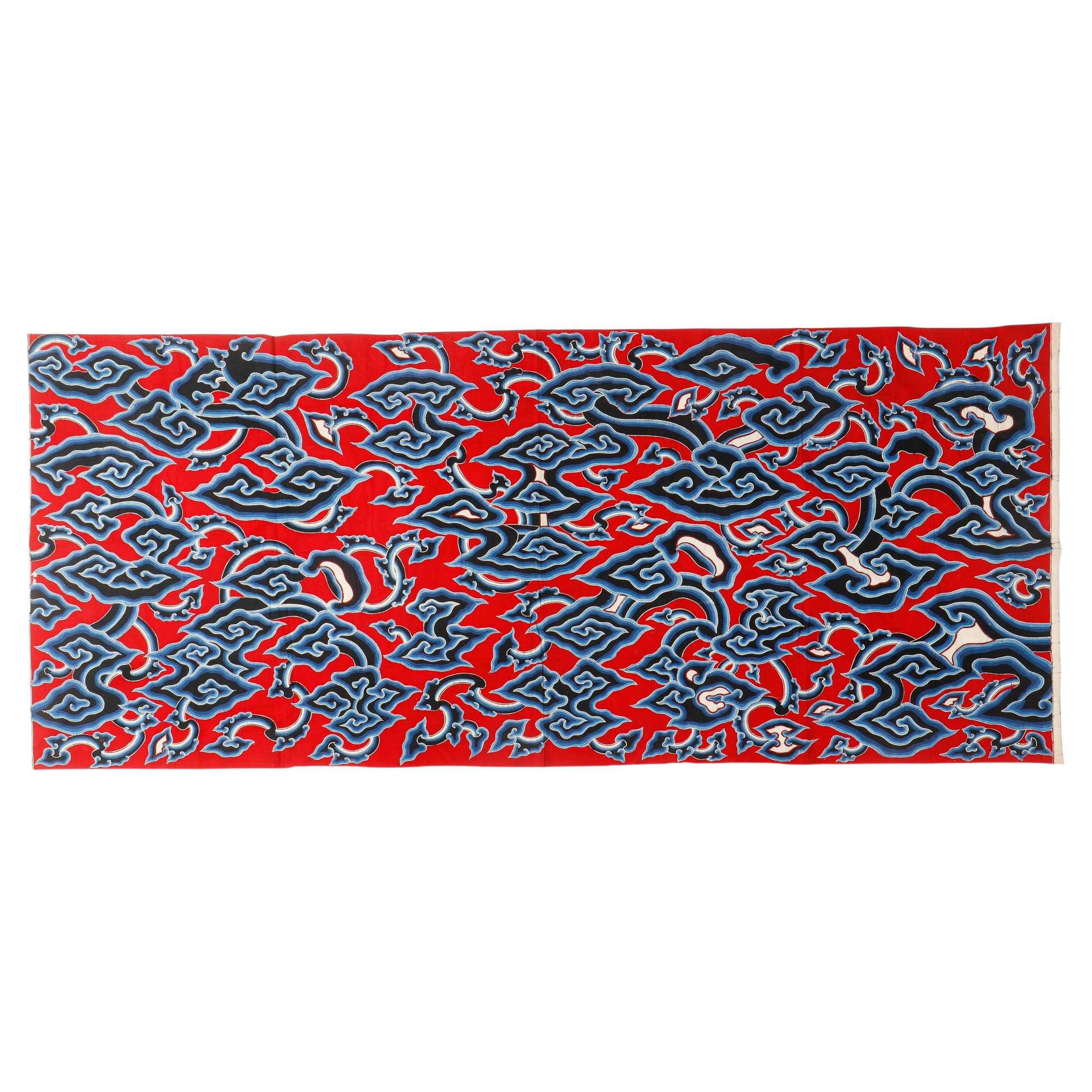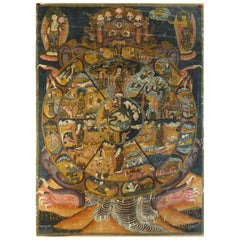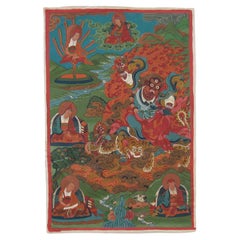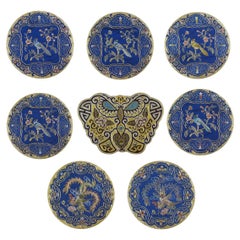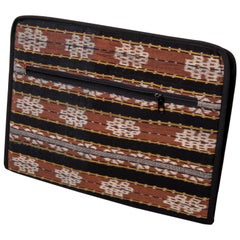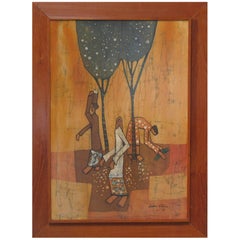
Kwan Chin Batik Dye on Cloth, Signed 'Kwan Chin'
View Similar Items
Want more images or videos?
Request additional images or videos from the seller
1 of 6
Kwan Chin Batik Dye on Cloth, Signed 'Kwan Chin'
About the Item
- Creator:Kwan Chin (Artist)
- Dimensions:Height: 34.5 in (87.63 cm)Width: 25.5 in (64.77 cm)Depth: 1.5 in (3.81 cm)
- Style:Anglo-Indian (Of the Period)
- Materials and Techniques:Linen,Teak
- Place of Origin:
- Period:
- Date of Manufacture:1970
- Condition:Wear consistent with age and use.
- Seller Location:Ottawa, CA
- Reference Number:1stDibs: LU141727971173
About the Seller
5.0
Gold Seller
These expertly vetted sellers are highly rated and consistently exceed customer expectations.
Established in 1989
1stDibs seller since 2015
414 sales on 1stDibs
Typical response time: 2 hours
More From This SellerView All
- Tibetan Thangka Depicting the Bhavacakra, Early 20th CenturyLocated in Ottawa, OntarioA Tibetan Thangka Depicting The Bhavacakra Early 20th century, Color on cloth. A thangka showing the bhavacakra with the ancient five cyclic realms of samsara in Buddhi...Category
Early 20th Century Chinese Chinese Export Paintings and Screens
MaterialsLinen
- Tangka Painting of Manifestations of Padmasambhava Tibet, 20th CenturyLocated in Ottawa, OntarioA TANGKA PAINTING OF MANIFESTATIONS OF PADMASAMBHAVA TIBET, 20TH CENTURY He appears as the Dorje Drolo. He rides a fierce tigress, and brandishes a vajra in his right hand and a rit...Category
Early 20th Century Tibetan International Style Textiles
MaterialsCotton
- Eight Chinese Hand Embroidered Silk Blue Ground and Metallic Thread MatsLocated in Ottawa, OntarioEight Chinese hand embroidered silk blue ground and metallic thread mats First half of 20th century. Five circular mats depicting a bird ...Category
Early 20th Century Chinese Chinese Export Quilts and Blankets
MaterialsSilk, Thread
- Mud Cloth 'Bogolanfini', Mali, Bamana People, Mid-20th CenturyLocated in Ottawa, OntarioA mud cloth (Bogolanfini), Mali, Bamana People mid-20th century. Hand woven 'discharge dyed' cotton Approximately 71 x 52 in. (180cm. x 132cm.) A dazzling geometric pattern...Category
Mid-20th Century Malian Tribal Tribal Art
MaterialsFabric
- Kay Bojesen Denmark Signed Teak MonkeyBy Kay BojesenLocated in Ottawa, OntarioKay Bojesen 1886 - 1958 LARGE MONKEY Branded “KAY BOJESEN DENMARK COPYRIGHT” Teak, Limba. Mid 20th century. Approx: 17 1/2" in.(44 cm.) high. 16" in. ( 41 cm.) wide. Together wi...Category
Vintage 1950s Danish Mid-Century Modern Animal Sculptures
MaterialsTeak
$5,500 / set - Large Signed Lotte & Gunnar Bostlund Table Lamp, Tribal Pattern, 1960sBy Lotte and Gunnar BostlundLocated in Ottawa, OntarioLarge signed Lotte & Gunnar Bostlund table lamp, tribal pattern from the 1960s. The lamp is hand painted in geometric patterns on a glazed stoneware, Original shade, harp and finia...Category
Mid-20th Century Canadian Mid-Century Modern Table Lamps
MaterialsStoneware
You May Also Like
- African Batik Cloth Natural Hand-woven Hand-Printed Cotton Fabric Ghana 10 YardsLocated in North Hollywood, CAAfrican Batik Cloth Natural Hand-woven Hand-Printed Cotton Fabric Ghana 10 yards. Colors are organic earth tone beige and light brown in geometric design. Non waxed fabric circa 1950s. Hand made in Ghana Africa. Museum Quality Original Long Piece. 380 inches, (30 ft 10 yards Long) x 46 inches Inches Wide( 4ft). Could be use to make pillows or upholstery. History of Batik in Africa: Batik, a traditional fabric art technique, has a rich history in Ghana, West Africa. The practice of batik involves using wax to create intricate patterns on fabric, which is then dyed to achieve the desired design. While batik has its origins in Asia, particularly in Indonesia, it has been embraced and adapted by various African countries, including Ghana. In Ghana, batik-making can be traced back to the mid-20th century when it gained popularity as a form of traditional textile art. The craft was introduced by artists and artisans who were inspired by the vibrant and expressive nature of batik. These early practitioners experimented with different designs, colors, and patterns, infusing local themes and motifs into their creations. Over time, batik became an important part of Ghanaian culture and identity. It is not only used for clothing but also for various decorative and functional items such as wall hangings, tablecloths, and accessories. The art form often reflects the rich cultural heritage of Ghana, incorporating symbols, proverbs, and traditional stories into the designs. Ghanaian batik artists often employ a combination of traditional and contemporary elements, creating a unique fusion of styles. The process of making batik involves applying hot wax to the fabric using various tools to create the desired patterns. The wax acts as a resist, preventing dye from penetrating the waxed areas. After dyeing, the wax is removed, revealing the intricate designs on the fabric. Today, batik-making in Ghana continues to thrive as both a traditional craft and a form of artistic expression. Many artisans and designers draw inspiration from Ghana's diverse cultural landscape, incorporating elements from different regions and ethnic groups into their batik creations. The art form has also gained international recognition, with Ghanaian batik products being sought after both locally and abroad. In summary, the history of batik in Ghana is a testament to the creativity and adaptability of artists who have embraced and transformed this traditional technique into a vibrant and culturally significant art form within the country. HISTORY OF BATIK In the mid-nineteenth century, the Belanda Hitam, or "Black Dutchmen," are said to have introduced batik to West Africa after serving as indentured soldiers for the Dutch in Indonesia. Returning from their conscriptions with trunks of fine Javanese batik, the opulent patterns captured the imagination of their friends and relatives. However, textile history is complex, and only a handful of recruits returned to West Africa with batik due to delayed payments. Batik, with roots traced to Egyptian mummies, is a tradition found globally, from Southeast Asia to Japan and India. Europeans, particularly the Dutch, played a significant role in industrializing batik from the seventeenth century onward. In West Africa, Dutch Scholar Ineke van Kessel suggests that batik arrived from India over trans-Saharan routes. Local populations, like the Yoruba in Nigeria, incorporated wax printing into their textiles. European traders brought wax and non-wax fabrics to West Africa in the seventeenth century, targeting a population ready for their consumption. European designers adapted prints for the African market...Category
Mid-20th Century Ghanaian Folk Art Textiles
MaterialsCotton
- Indonesian ClothLocated in Roma, ITIndonesian cloth finely decorated with floreal motives in yellow and green on a dark blue background. The item is not restored and is in very good condition.Category
Mid-20th Century Indonesian Modern Textiles
MaterialsTextile
$1,272 Sale Price25% Off - Batik Bag Never UsedLocated in Alessandria, PiemonteBatik envelope-bag: perfect, never used. B/2432.Category
Late 20th Century Indonesian Other Textiles
MaterialsCotton
$212 Sale Price20% Off - Antique Javanese Silk Batik SlendangLocated in Point Richmond, CAAntique Javanese Silk Batik Slendang (Selendang). A shoulder cloth length of compact hand spun silk imported from China. The diagonal patterned stripe...Category
Early 20th Century Indonesian Tribal Textiles
MaterialsSilk
- Antique Javanese Silk Batik SlendangLocated in Point Richmond, CAAntique Javanese Silk Batik Slendang (Selendang). A shoulder cloth length of compact hand spun silk imported from China. The flora & fauna design crea...Category
Early 20th Century Javanese Tribal Textiles
MaterialsSilk
- Hand-Drawn Batik Textile, from Java IndonesiaLocated in Jimbaran, BaliA fine example of a batik textile from Solo, Java, Indonesia. This textile features wonderful detailing & contrast. It features a wonderful array of flor...Category
Early 2000s Indonesian Other Textiles
MaterialsCotton
Recently Viewed
View AllMore Ways To Browse
Malaysia Vintage Furniture
Framed Batik
Teak Singapore
Indian Batik
Batik Framed Art
Frame Malaysia
Large Bed Covers
Embroidered Silk China
Silk Embroidery Panel
Traditional Japanese Textiles
Embroidery Table
Woven Natural Couch
Asian Silk Textile Panel
Table Cover Textile
Floral Needlework
Beds Etc
Antique Japanese Textiles Textiles
Asian Wedding



